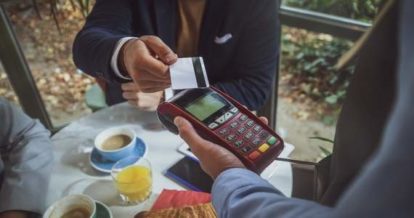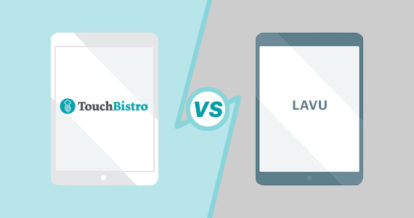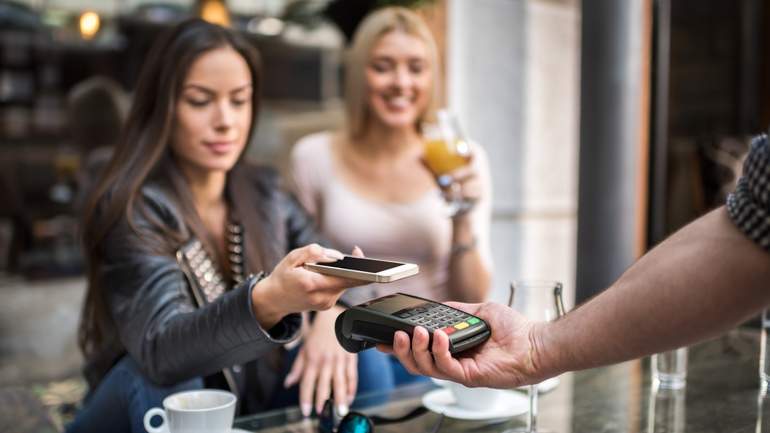
What’s on every restaurateur’s mind right now? How to make guests feel as safe as possible, whether they’re coming to your restaurant for a drink or a meal. One simple and effective way to help promote health and safety – with the additional benefit of convenience for your customers – is to offer contactless payment at your restaurant.
Contactless payment was a growing trend even before the COVID-19 pandemic. But the public health crisis has accelerated the demand for touchless transactions, with consumers and vendors alike turning to touchless payment tech to minimise contact.
In this guide, we’ll go beyond contactless payment 101 and explore eight things to know about how this solution can help your restaurant adapt to changing consumer behaviour, including:
- What contactless payment is and why it’s so popular
- Security benefits of this payment method
- How contactless payment speeds up transactions
- How it helps increase consumer spending
- Steps you can take to implement contactless payment
- Why it’ll help you save money on processing fees
- How COVID-19 has changed consumer payment habits
What Is Contactless Payment?
As credit card readers have evolved over the past few decades, two primary forms of contactless payment have emerged that restaurateurs should know about: tap and mobile payment. Major credit card companies began issuing contactless cards in 2008, while mobile payment became an option for Android users in 2011 and iPhone users in 2014.
Tap payment uses radio frequency identification (RFID) technology to transmit information from a debit or credit card’s microchip to your payment terminal. Mobile payment uses near-field communication (NFC) technology, which enables your guests to pay with their smartphone’s mobile wallet by hovering their phone over your card reader.
Now that you understand the basics, let’s dig into eight things you should know about contactless payment to help your restaurant thrive.
Contactless Payment: 8 Things Restaurateurs Need To Know
1. Consumers worldwide are choosing tap and mobile payment
You may already offer mobile credit card processing so your guests can pay their bill at the table (and if you don’t, you should strongly consider it). But if you haven’t explored contactless payment yet, it’s time to dive into this next frontier in restaurant service.
In July 2020, Barclaycard reported 90% of face-to-face transactions were made through contactless payments in April – the first full month of lockdown – while there was a 15% slump in cash payments. Research from Merchant Savvy estimates over 20% growth in the adoption of mobile payments in the UK, projecting the number of users to rise from 5 million in 2020 to 6.2 million by 2023.
The decline in ATM withdrawals and rise in mobile payments and contactless payments are leading some to question if we are witnessing the death of cash. As COVID-19 cases creep up again, people are becoming more cautious, and so contactless payments look set to grow as the cleaner, safer choice.
2. Contactless payment is super secure
Touchless options aren’t just convenient for your restaurant guests. Tap and mobile payments offer extra security because they enable your customers to pay their bill without ever handing their card over to anyone, entering a pin, or signing a receipt.
These methods use the world’s most sophisticated and cryptographic security. This high level of protection helps ensure that a contactless credit card or mobile wallet never gets charged unintentionally because the payment method needs to be placed within one or two cm of the card reader for the sale to go through.
Similar to cashless card transactions, every touchless transaction has a unique encryption code that secures your customer’s payment information. This is one of several reasons why offering contactless payment in your restaurant is a great way to give your guests the peace of mind they’ve been craving over the past few months.
3. Contactless payment speeds up transactions
With public health concerns still looming and limits on restaurant capacity in place for the foreseeable future, it’s crucial to ensure your guests flow in and out of your restaurant safely. Implementing touchless payment is an important step to consider when reopening your restaurant because it can help you avoid front-of-house queues by making transactions faster.
Speeding up the payment process is especially useful if your restaurant typically serves a high volume of customers. Streamlining transactions can help you turn over more tables or move counter lines faster, increasing your revenue.
For example, with Barclaycard’s contactless credit cards, transactions take as little as half a second to process, which is seven times faster than requiring your guests to pay with a chip card and enter a pin. Using a contactless payment method is also easier than fumbling with a pin pad, which some guests may find difficult to see up close.
4. Tap and mobile payment options can encourage customers to spend more
A UK study reported that contactless payment impacted the spending habits of university students. The research found that people felt less guilty when they used a touchless card because it was easier to make small, spontaneous purchases.
Does your restaurant attract this demographic? Time to cash in!
Contactless payment can also help increase your restaurant sales – not only because it takes less time. Barclaycard reports that seven million customers have used contactless to pay for items above £30 since the limit was increased to £45. Interestingly, a study by Charged Retail found that with the new limit, the average transaction value for contactless payment has jumped almost 50% from £9.28 to just under £14 during the lockdown.
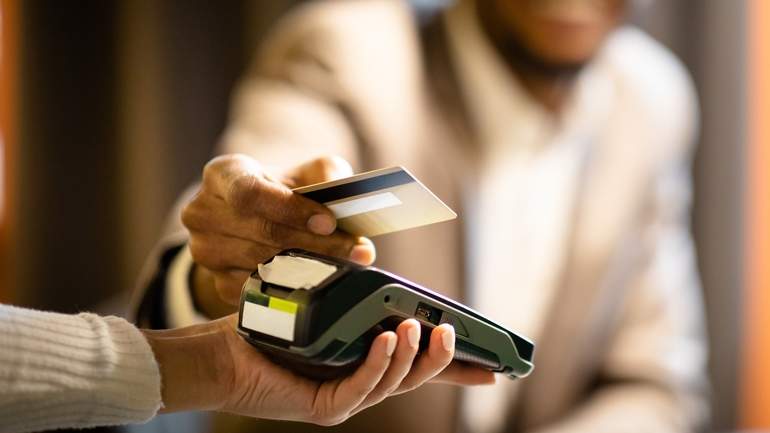
5. Contactless payment is easy to implement
Like the benefits but not sure how to get started?
Rest assured, it’s easy to implement. You just need a payment processor that can accept contactless cards and mobile wallet payments, as well as a payment terminal (provided by the processor) that can facilitate the transactions. One piece of hardware – that’s it!
Payment processing is a complex topic, especially when you get into the different rates payment processors charge. The best advice is to shop around and review their various fee structures before you commit. Integrating your payment processor and EPOS software is also a wise choice for restaurateurs who want to increase efficiency in their business.
Look for an EPOS solution that allows you to choose from multiple payment processors. TouchBistro EPOS offers a selection of top-tier payment partners, including TouchBistro integrated payments with Barclaycard, as well as tableside payment and the ability to accept all card types easily – including contactless credit cards.
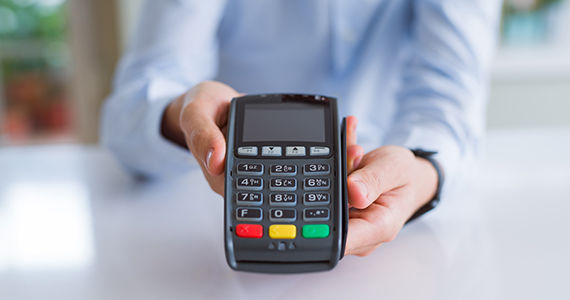
Find out which fees are negotiable and how to get the best price.
6. Contactless payment options carry low processing fees
Balancing the books is a major concern for many restaurateurs lately. One way to help your restaurant save money is to allow your guests to use touchless payment methods, which have lower credit card processing charges than manually keyed-in payments.
The average fee for a contactless, chip, or swipe payment is between 1% and 3%. This is thanks to the lower fraud risk associated with these methods compared to manually-keyed transactions. Manually-keyed transactions are also known as card-not-present transactions (CNP). In 2019, CNP fraud cost UK businesses over £393M.
7. COVID-19 has made contactless payment more popular
Many of us are more mindful of security and convenience these days, a mentality that’s causing a popularity shift in favour of contactless payments. UK Finance predicts that by 2028, cash will account for a mere 9% of all payments. And that study was actually conducted before lockdown. Now, even rural residents are onboard with going cashless, as 70% of countryside dwellers feel more comfortable using cashless payments since the initial lockdown.
Part of the reason for this increased popularity is that major credit card companies in the UK increased their tap limits from £30 to £45, making it easier and safer for couples and small families to eat out without cash. However, while 7.4 million people in the UK are now living a cashless life, there are some growing concerns about what the shift means for fraud and vulnerable people.
Despite the concerns, 59% of the UK population are now opting for contactless or mobile payments over cash. While strictly cashless businesses are controversial, offering contactless options in addition to other forms of payment will give your customers the freedom to embrace this rapidly growing trend.
8. Contactless payment options still let guests add a tip
The question of how to tip when using contactless payment options may be a concern if you have a full service restaurant, and your staff and guests aren’t familiar with the process. You can put their minds at ease by letting them know that adding a tip to a touchless transaction is both straightforward and safe.
There’s no need for a guest to hand their card over to anyone if they want to add a tip to their bill. Simply follow these steps, which are included as prompts on the terminal:
- The employee sanitises the payment terminal and place it near the guest, so they can use it with minimal contact.
- The guest reviews and confirms the total check amount on the sanitised terminal and pin pad. This total is keyed in by the server/employee or automated by the EPOS (if you have an integrated payment processor), just like with any other type of transaction.
- The guest enters the tip (either by a percentage of the total bill or a specific pound amount) and confirms the new total and taps their card. The transaction is approved and the payment is processed.
- The employee sanitises the terminal after use.
While there is minimal contact with this transaction, the guest is still the only one touching their own card, and the terminal can be easily cleaned between uses.
Research from SipScience found that consumers in the post-COVID era want contactless payments at bars and restaurants, with participants in the study listing the following concerns:
- Having wait staff handle credit cards after they have handled credit cards from other customers in the same trip to the checkout.
- Are hands washed in between handling my card?
Even when guests add their own tip, contactless payments give them more control and confidence because no one else is handling their card.
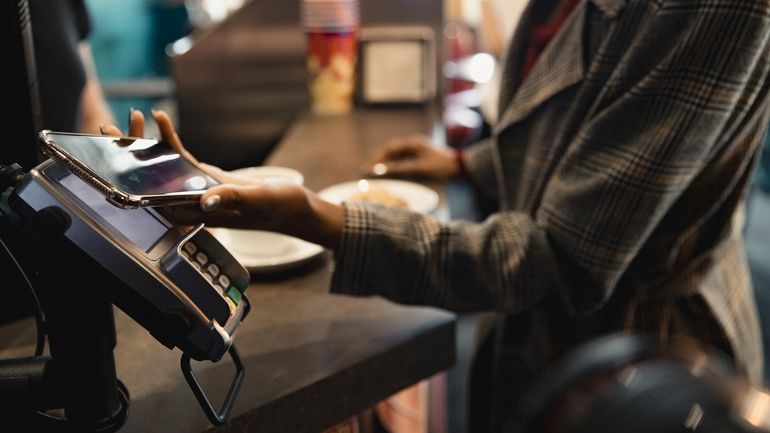
Why Your Restaurant Should Offer Contactless Payment
As a restaurateur in the midst of a public health crisis, you must go beyond delighting your guests with excellent food. You need to ensure the health and safety of your patrons – and staff – at all times.
Encouraging tap and mobile payments can help reduce the spread of COVID-19, because it reduces the points of contact in your restaurant: less touching of terminals, pin pads, pen, receipts, etc.
Adopting contactless payment methods shows a commitment to safety, which helps you build trust with your guests. It shows your restaurant takes hygiene seriously. With many people trying to limit the number of places they go these days, it pays to put effort into creating a smooth experience that makes your guests want to return.
Offering touchless payment also makes your restaurant more competitive. Contactless transactions have been popular for several years, and now the UK is now one of the least cash-reliant countries in Europe. Giving your guests the option to pay their bill via tap or a mobile wallet can help put you ahead of the curve.
As the restaurant industry changes in response to shifting consumer behaviour, you need to adapt along with it. Ultimately, in a post COVID-19 world, cash will be less common. It’s worth the effort to make the shift to contactless payment now so that you can continue to serve your customers in the long run.
Sign up for our free weekly TouchBistro Newsletter

